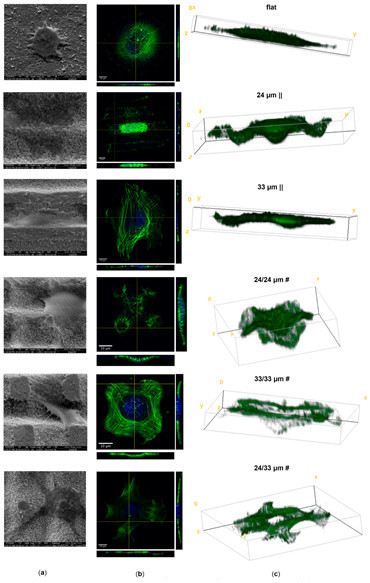Laboratory 3 - Biology
The Biology laboratory is a facility for the evaluation of biomaterials, surfaces modified through various techniques and compounds synthesized in INFLPR and partner laboratories;
- Providing testing and characterization services (Microscopy (immunohistochemistry, immunofluorescence) viability tests, cell proliferation, ELISA, flow cytometry, sorting of cell populations, etc.) to economic agents or institutions that do not have these testing capabilities.
- Obtaining and testing intelligent surfaces and interfaces for tissue engineering and implantology;
- Development of study protocols at cellular / intracellular level of various compounds ( including pharmaceuticals ), which can be transferred to users (drug testing laboratories, research centers - CIB ).
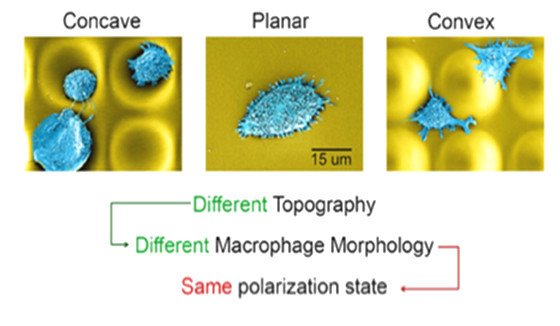
| Convex and concave micro-structured silicone controls the shape, but not the polarization state of human macrophages, V. Malheiro et al, Biomaterials Science, 2016 |
The activity of the laboratory falls within the directions 3 and 4 of the themes of the INFLPR strategy;
Dir. 3 - Nanostructures and advanced materials obtained / characterized by laser, plasma and radiation methods for eco-nano-technologies.
Dir. 4 - Laser, plasma and radiation methods and devices with applications in pharmacology and biomedicine.
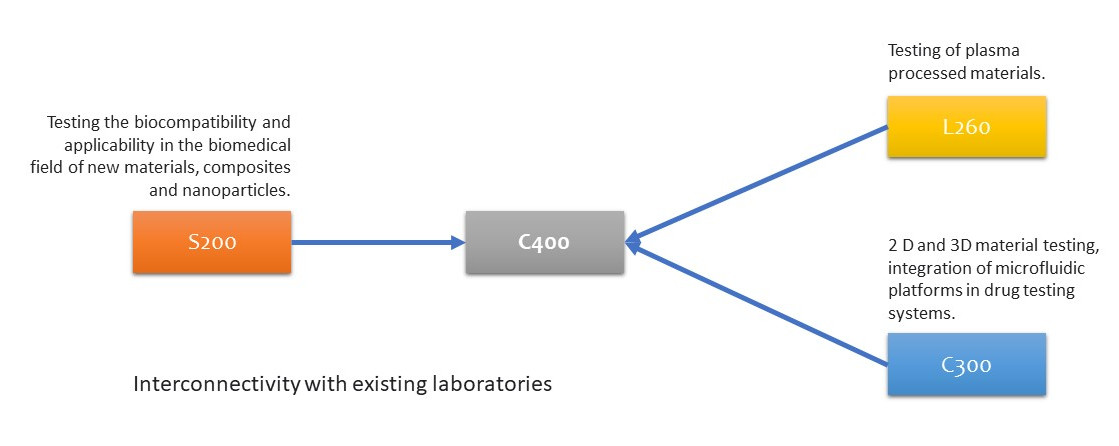
Institutional equipment / facilities;
-
Microscopy (immunohistochemistry - IHC, immunofluorescence)
-
Feasibility tests, cell proliferation (MTT, MTS, SBR - Sulforhodamine B colorimetric assay; CCK-8 (WST-8) Assay)
-
Research and diagnostic methods (eg ELISA tests - enzyme-linked immunosorbent assay)
-
Flow cytometry and sorting of cell populations (with applications in medical biology: hematology, immunology, oncology, virology, parasitology, bacteriology, endocrinology; pharmacology and toxicology: the effect of immunotherapeutic, chemotherapeutic, antibiotic agents);
- Cell pigments: chlorophyll, phycoerythrin; pH, as well as intracellular Mg and ion exchange
- Enzymatic activity, measurement of cell membrane, mitochondrial potential
- Cell viability and apoptosis
- Cell adhesion (pathogen-host cell adhesion)
- Multiple drug resistance in cancer cells
| Bioinstructive Micro-Nanotextured Zirconia Ceramic Interfaces for Guiding and Stimulating an Osteogenic Response In Vitro, L.E. Sima et al., 2020 |
Equipment specifications
- Vertical autoclave
responsible staff - Valentina Dinca, Simona Nistorescu, Cristina Staicu
users - Valentina Dinca, Simona Nistorescu, Cristina Staicu
- Cell biology hood
responsible staff - Valentina Dinca, Simona Nistorescu, Cristina Staicu
users - Valentina Dinca, Simona Nistorescu, Cristina Staicu
- Freeze dryer
responsible staff - Valentina Dinca, Simona Nistorescu, Cristina Staicu
users - Valentina Dinca, Simona Nistorescu, Cristina Staicu
- CO2 Incubator
responsible staff - Valentina Dinca, Simona Nistorescu, Cristina Staicu
users - Valentina Dinca, Simona Nistorescu, Cristina Staicu
-
High speed centrifuge with 3 rotors and accessories
responsible staff - Valentina Dinca, Simona Nistorescu, Cristina Staicu
users - Valentina Dinca, Simona Nistorescu, Cristina Staicu
-
Flow cytometer with built-in microscope - Luminex AMNI008

responsible staff - Valentina Dinca, Simona Nistorescu, Cristina Staicu
users - Valentina Dinca, Simona Nistorescu, Cristina Staicu
-
Automatic line for cell culture processing and product verification
responsible staff - Valentina Dinca, Simona Nistorescu, Cristina Staicu
users - Valentina Dinca, Simona Nistorescu, Cristina Staicu
-
Multi-mode plate reader with automatic microscope - Clariostar
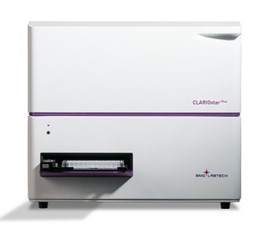
responsible staff - Valentina Dinca, Simona Nistorescu, Cristina Staicu
users - Valentina Dinca, Simona Nistorescu, Cristina Staicu
-
Fluorescence microscope
responsible staff - Valentina Dinca, Simona Nistorescu, Cristina Staicu
users - Valentina Dinca, Simona Nistorescu, Cristina Staicu
- Vertical deep freezer with accessories
responsible staff - Valentina Dinca, Simona Nistorescu, Cristina Staicu
users - Valentina Dinca, Simona Nistorescu, Cristina Staicu
- Centrifuge rotor cells and accessories
responsible staff - Valentina Dinca, Simona Nistorescu, Cristina Staicu
users - Valentina Dinca, Simona Nistorescu, Cristina Staicu
- Filtration system
responsible staff - Valentina Dinca, Simona Nistorescu, Cristina Staicu
users - Valentina Dinca, Simona Nistorescu, Cristina Staicu
- Microcentrifuge
responsible staff - Valentina Dinca, Simona Nistorescu, Cristina Staicu
users - Valentina Dinca, Simona Nistorescu, Cristina Staicu
- Cell sonicator-disruptor
responsible staff - Valentina Dinca, Simona Nistorescu, Cristina Staicu
users - Valentina Dinca, Simona Nistorescu, Cristina Staicu
Laboratory Team
Acting Head of Laboratory
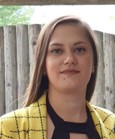
Drd. Cristina Staicu - ACS

Drd Simona Nistorescu - ACS
Perspectives - Research and development activity:
-
Development of bio-platforms aimed at cell screening to understand the behavior of cells related to surface chemistry, physical factors (hardness, topography, etc.);
-
Development of test processes and recipes for biomaterials depending on their type;
-
Obtaining and in vitro testing of systems and structures for cellular studies in three-dimensional biomimetic configurations; development of study platforms and identification of compounds that lead to impaired behavior of spheroid systems;
-
Development of bio-interface modification / control strategies;
-
Development of surface modification processes and recipes for in vitro cellular response control;
-
Development of diagnostic platforms, biochips / bio-interfaces for testing allergenic, toxic compounds.
